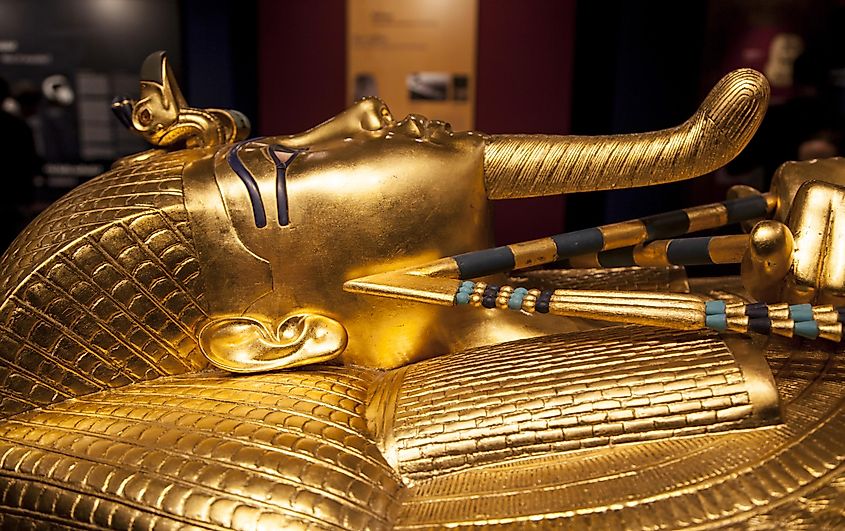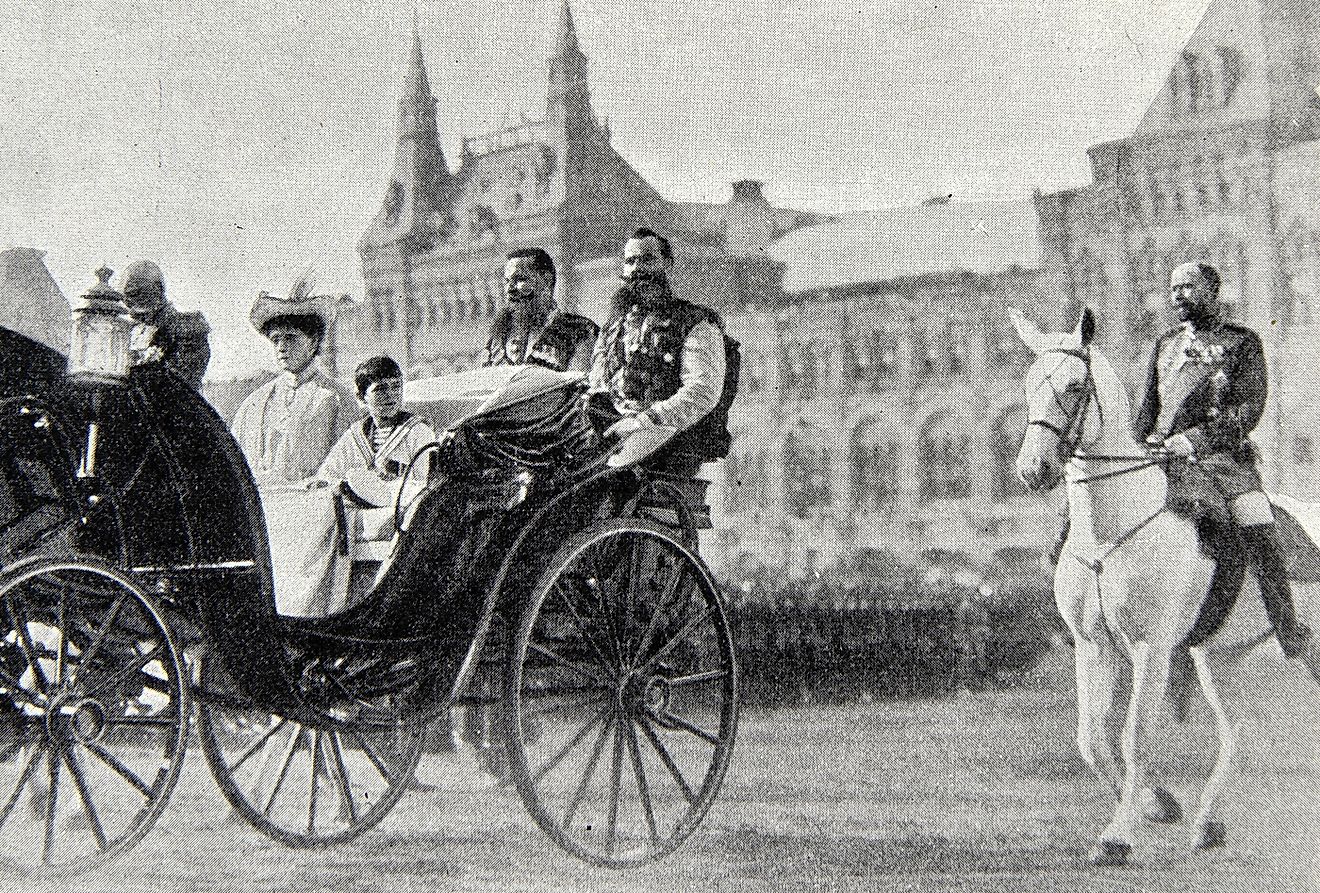
These Ancient Archaeological Finds Changed History
In a world where fabled empires rise and fall and bequeath us with only fragments and snippets, archaeological discoveries are of immense value. While archaeology has confirmed many things we have always known, such as the fact that Romans were great builders and architects, archaeology has also proved us wrong innumerable times. Still, the search continues. We want to know where Cleopatra was buried, for instance, or anything about Atlantis, a fabled island that Plato wrote about, where a race of demigods and powerful kings once lived. As we continue to learn more about famous ancient civilizations, such as the Mayan Civilization, and legendary individuals, such as Pompeii, we recount here the ancient archaeological finds that changed history as we knew it.
Pharaoh Tut's Tomb

On November 26, 1922, some minutes after 4 p.m., a British archaeologist described as "private and stubborn," candle in hand, stood in awe inside a subterranean corridor. He was dumbfounded, unable to believe his eyes. Behind him was his wealthy patron — who could not bear the anxiety a minute longer. "Can you see anything?" the now impatient aristocrat asked his associate. "Yes, wonderful things," the mostly self-taught archaeologist fired back. For the first time in more than 2,000 years, someone was inside a pharaoh's burial chamber, looking at thousands of artifacts that had lain undisturbed for several centuries — besides a now world-famous golden sarcophagus. Thanks to this epochal discovery, the world, at last, had a rare glimpse into life in ancient Egypt; how they prepared for death, the kind of food they ate— and that music was part and parcel of their culture.
China's Terracotta Army

According to the history you learned in school, Marco Polo was the first European to set foot in China. He would regale his contemporaries with stories of a civilization way ahead of Europe; in culture, literature, commerce, and technology. But if the circumstances around the discovery of China's Terracotta Army are anything to go by, Marco Polo may not have been the first European to set foot in China after all. For starters, the Terracotta Army is an underground collection of more than 2,000 life-sized sculptures depicting the armies of Qin Shi Huang, China's first emperor. Scientists believe the sculptures' life-size appearance indicates Greek influence since Chinese sculpture was often more stylized. In addition, a European DNA sample found in the nearby province — and dated to the time before the Terracotta Army — indicates that Marco Polo at least had one European predecessor.
Megalosaurus

The discovery of Megalosaurus, the first recorded dinosaur find in history, was as revolutionary as it was controversial. The man credited with this remarkable feat was William Buckland, a British Native whose career was a blend of theology, geology, and paleontology. William Buckland was also quite eccentric. He once purposed to eat every animal in the world and found the taste of mole to be "the most repulsive." In 1824 — at a meeting of the Geological Society, Buckland announced to a surprised audience that he had discovered bones of a giant reptile at Stonesfield, about 10 miles northwest of Oxford. This, he would call "Megalosaurus" or "great lizard." In 1842 British anatomist Richard Owen called these fossils Dinosauria – and the word dinosaur was birthed. Prior to 1842, nobody had heard of dinosaurs or any giant reptiles.
Linear B

In 1900, Arthur Evans, a British archaeologist who would later be knighted about a decade later, started digging at Knossos, a city in ancient Crete often regarded as Europe's oldest city. He wanted to prove that the ancient Cretans knew how to read and write. Fortunately, he did not have to wait for long. He would discover two types of inscription on several slabs of baked clay. While the first type of inscription represented the language of the Minoans, the second, which was called Linear B, was found to be Mycenaean. A brilliant former wartime bomber navigator would lead out in deciphering these writings as essentially Greek. This would prove that the Mycenaeans were Greek after all — and gave literary credit to Homer's two epics, Iliad and Odyssey.
Pompeii

Founded by ancient Greek settlers about the 8th century BC, the city of Pompeii would, about six centuries later, be the playground of some of Rome's most wealthy families. With time, stunning houses and beautiful villas would define the town's architectural landscape. As would be expected, brothels and bathhouses would soon make their presence known. But nature would suddenly spoil the party through an eruption of Mount Vesuvius — located about 5 miles away. A blast of flaming gas vaporized everyone in its path. While it was previously thought that Pompeii was destroyed on August 24, AD 79, a discovered inscription proved the fabled city was actually destroyed not earlier than October 17, and hence, changed history as we knew it.
Rosetta Stone

"I've got it!" Jean-François Champollion exclaimed in triumph while running to his brother's room. Overwhelmed with ecstasy, he would then faint and would not recover for the subsequent five days after discovering this ancient piece of history. Regarded as the founder of Egyptology, Champollion had been working to decipher hieroglyphics on a large stone fragment construction workers had stumbled on in a town called Rosetta. Rosetta is a port city located 40 miles east of Alexandria. Thanks to Champollion's incredible achievement, the world possessed the key that eventually unlocked ancient Egypt's civilization, one that was the fountainhead of both Ancient Rome and Classical Greece. According to Egyptologist John Ray, Rosetta Stone is not just the key to ancient Egypt but also "the key to decipherment itself."
The Antikythera Mechanism

We always knew that the ancient Greeks were intelligent. We men like Socrates, Plato, and Aristotle, nearly every subject on earth was dissected to its most basic parts. From Pythagoras, who gave us an eponymous theorem and transformed mathematics into an art of the mind, to Hippocrates, whose works are still the greatest influence on modern Medicine, ancient Greeks have been among the world's greatest thinkers. Yet, the discovery of the Antikythera Mechanism, the world's first computer, which was used to calculate and display information about astronomical phenomena, has told us that we were merely scratching the surface with respect to ancient Greeks' intellectual culture.
The Takeaway
While many archaeological discoveries have confirmed what we know about our world and its complex history, quite a number have revolutionized our understanding. The discovery of Megalosaurus, for instance, was a surprise because we had not known that giant reptiles, later called dinosaurs, once lived on our planet. Also, we did not know much about ancient Egyptians and the legendary pharaohs. However, thanks to Howard Carter's discovery of King Tut's tomb, we now not only know how pharaohs lived—but also how they died — or prepared to die.











